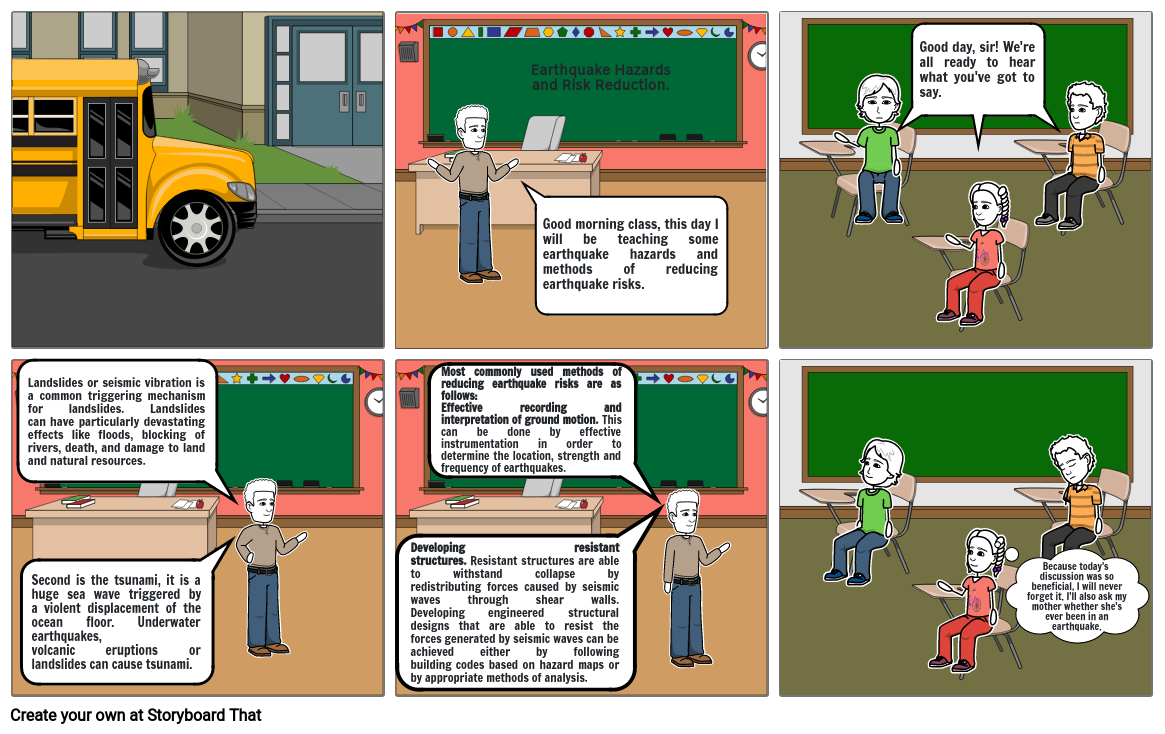drrr

Storyboard Tekst
- Earthquake Hazards and Risk Reduction.
- Good morning class, this day I will be teaching some earthquake hazards and methods of reducing earthquake risks.
- Good day, sir! We're all ready to hear what you've got to say.
- Landslides or seismic vibration is a common triggering mechanism for landslides. Landslides can have particularly devastating effects like floods, blocking of rivers, death, and damage to land and natural resources.
- Second is the tsunami, it is a huge sea wave triggered by a violent displacement of the ocean floor. Underwater earthquakes, volcanic eruptions or landslides can cause tsunami.
- Developing resistant structures. Resistant structures are able to withstand collapse by redistributing forces caused by seismic waves through shear walls. Developing engineered structural designs that are able to resist the forces generated by seismic waves can be achieved either by following building codes based on hazard maps or by appropriate methods of analysis.
- Most commonly used methods of reducing earthquake risks are as follows:Effective recording and interpretation of ground motion. This can be done by effective instrumentation in order to determine the location, strength and frequency of earthquakes.
- Because today's discussion was so beneficial, I will never forget it. I'll also ask my mother whether she's ever been in an earthquake.
Over 30 millioner Storyboards oprettet

